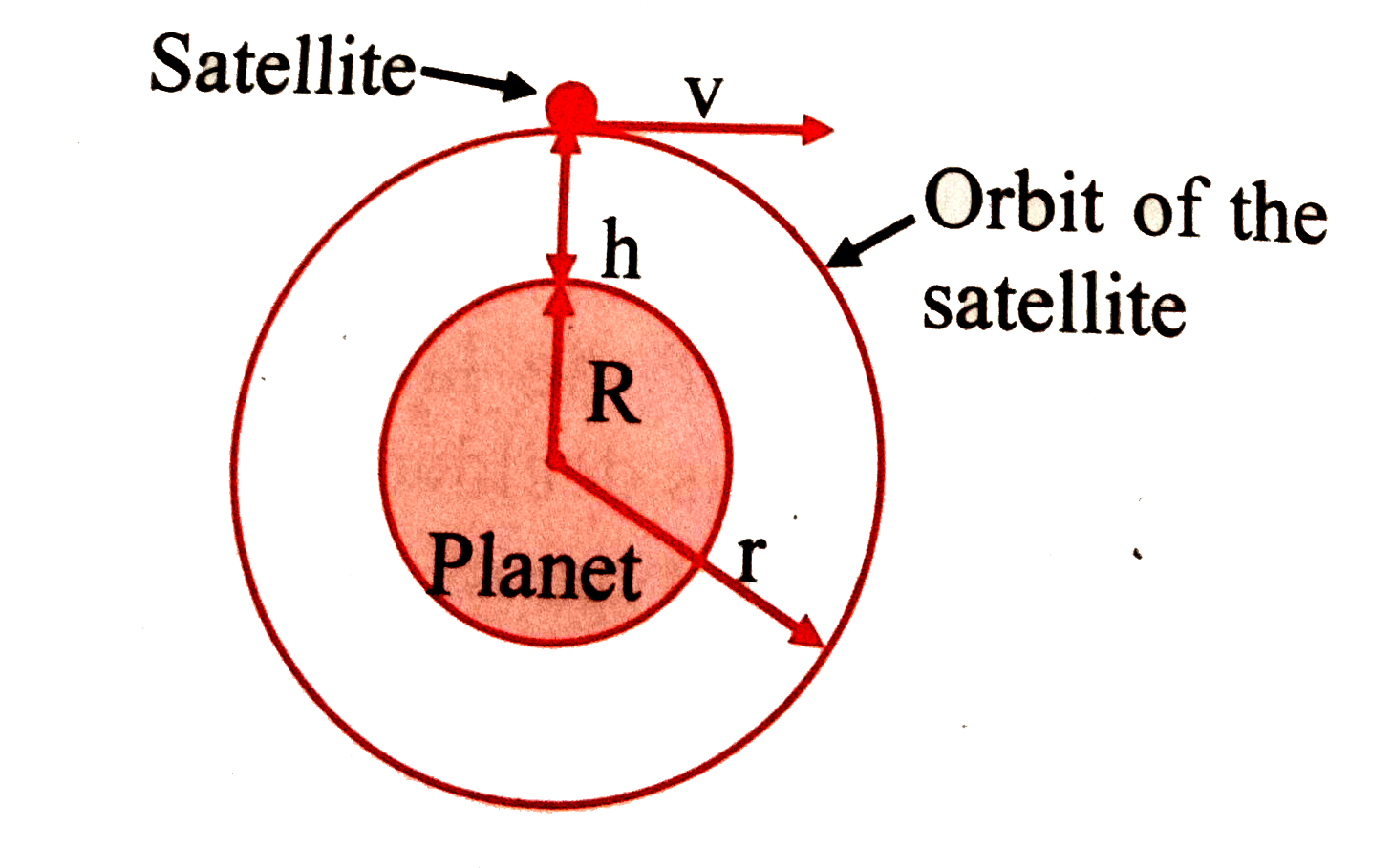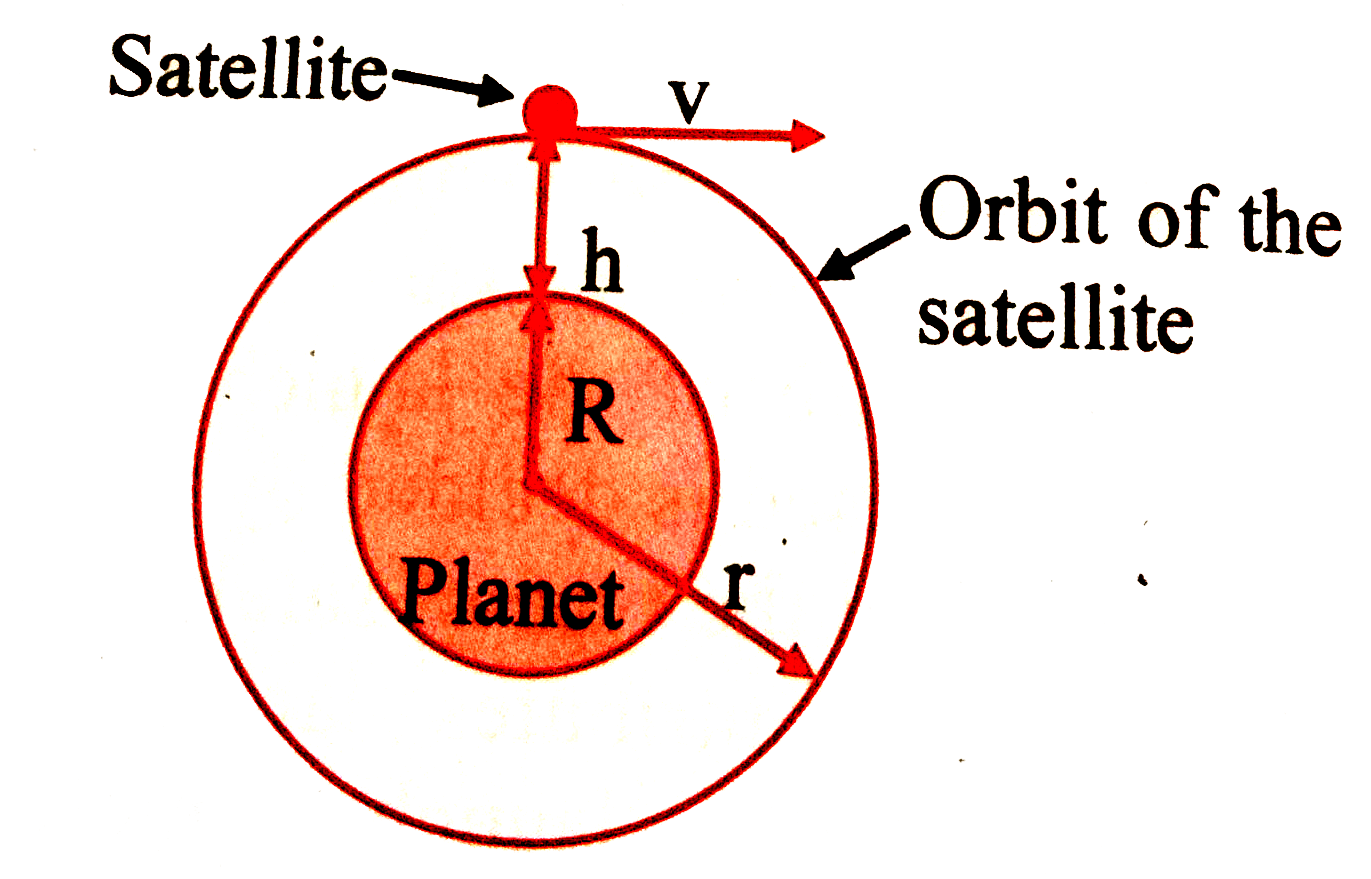In the question number 15, the ratio of the velocity of the satellite at apogee and perigee is
12
13
14
16
The correct Answer is:B
(b) Accroding to law of consevation of angular momentum,
Angular momentum at perigee= Angular momentum at apogee
∴mvPrP=mvArA
where m is the mass of the satellite.
∴vAvP=rPrA=2RE6RE=13
Topper's Solved these Questions
- GRAVITATIONBOOK - NCERT FINGERTIPSCHAPTER - GRAVITATIONEXERCISE - Universal Law Of Gravitations
14 Videos
- GRAVITATIONBOOK - NCERT FINGERTIPSCHAPTER - GRAVITATIONEXERCISE - The Gravitational Constant
2 Videos
- KINETIC THEORYBOOK - NCERT FINGERTIPSCHAPTER - KINETIC THEORYEXERCISE - Assertion And Reason
10 Videos
Similar Questions
A satellite is in an elliptical orbit around the earth with aphelion of 6R and perihelion of 2R where R=6400km is the radius of the earth. Find accentricity of the orbit. Find the velocity of the satellite at apogee and perigee. What should be done if this satellite has to be transferred to a circular orbit of radius 6R? [G=6.67×10−11SI units and M=6×1024kg]
View SolutionA satellite is in an elliptical orbit around the earth with aphelion of 6R and perihelion of 2R where R=6400km is the radius of the earth. Find eccentricity of the orbit. Find the velocity of the satellite at apogee and perigee. What should be done if this satellite has to be transferred to a circular orbit of radius 6R? [G=6.67×10−11SI units and M=6×1024kg]
View Solution
Knowledge Check
In the question number 10, the ratio of the velocity of the satellite at apogee and perigee is
A12B13C14D16A satellite is projected with a velocity √1.5 times the orbital velocity just above the surface of earth. Initial velocity of the satellite is perpendicular to the surface of earth. The maximum distance of the satellite from surface of earth will be -
A2ReB8ReC4ReD3ReA planet is revolving around the sun. its distance from the sun at apogee is rA and that at perigee is rp. The masses of planet and sun are 'm' and M respectively, VA is the velocity of planet at apogee and VP is at perigee respectively and T is the time period of revolution of planet around the sun, then identify the wrong answer.
AT2=π2Gm(rA+rP)3BT2=π22GM(rA+rp)3CvArA=vPrPDvA<vP,rA>rp
Observe the following diagram and answer the questions:

on which factors does the velocity of the satellite depend ?
View SolutionObserve the following diagram and answer the questions:

Derive the formula for that velocity of satellite assuming the mass of the planet M and mass of satellite as m .
View SolutionA planet is revolving around the sun. its distance from the sun at apogee is rA and that at perigee is rp. The masses of planet and sun are 'm' and M respectively, VA is the velocity of planet at apogee and VP is at perigee respectively and T is the time period of revolution of planet around the sun, then identify the wrong answer.
View SolutionProve that for an earth satellite, the ratio of its velocity at apogee (when farthest from earth) to its velocity at perigee (when closer to earth) is in the inverse ratio of its distance at apogee and perigee.
View SolutionProve that for an earth satellite, the ratio of its velocity at apogee (when farthest from the earth) to its velocity at perigee (when nearest to the earth) is the inverse ratio of its distances from apogee and perigee.
View Solution
